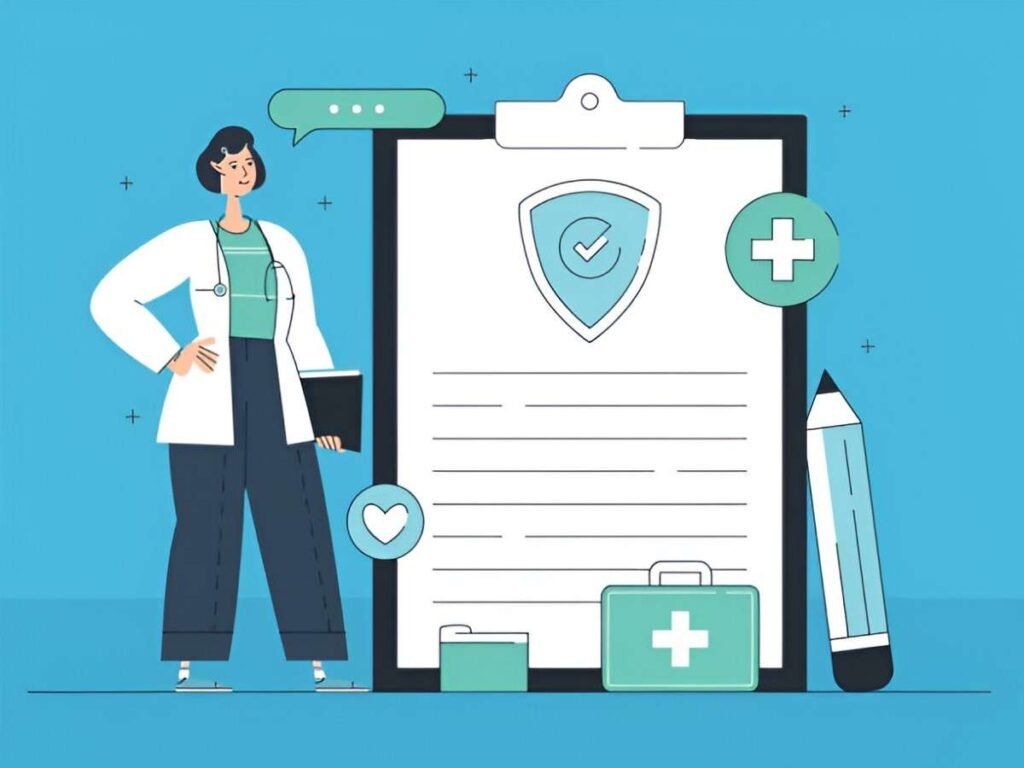Introduction
When it comes to medical coverage, accident insurance and health insurance serve distinct purposes. Many people assume that their health insurance will cover all medical expenses, but accident insurance can provide additional financial protection. Understanding their differences helps in making an informed decision about which one—or both—fits your needs.
In this article, I will discuss the core aspects of accident insurance and health insurance, their benefits, coverage limitations, cost factors, and real-life scenarios. I will also provide example calculations and comparison tables to illustrate key differences.
Table of Contents
What Is Accident Insurance?
Accident insurance provides financial assistance when an insured individual suffers an injury due to an accident. It typically covers:
- Emergency treatment
- Hospital stays
- Surgeries
- Diagnostic tests related to the accident
- Physical therapy
Accident insurance pays a lump sum or reimburses costs based on predefined limits, irrespective of other health insurance coverage.
What Is Health Insurance?
Health insurance covers medical expenses incurred due to illness, injury, and preventive care. It typically includes:
- Doctor visits
- Prescription drugs
- Hospitalization
- Surgical procedures
- Preventive care
Health insurance policies usually involve deductibles, copayments, and coinsurance, requiring policyholders to share costs.
Key Differences Between Accident Insurance and Health Insurance
| Feature | Accident Insurance | Health Insurance |
|---|---|---|
| Coverage Scope | Covers injuries from accidents only | Covers a broad range of medical expenses including illnesses and accidents |
| Payment Type | Lump sum or per-treatment reimbursement | Pays directly to healthcare providers, sometimes requiring copays and deductibles |
| Deductibles | Usually none | Commonly required |
| Premiums | Generally lower | Can be higher depending on coverage |
| Pre-existing Conditions | Not applicable | Typically considered and may lead to exclusions or higher premiums |
| Preventive Care | Not covered | Covered, including vaccinations and screenings |
Example Calculation: Accident Insurance vs. Health Insurance
Let’s assume John, a 35-year-old office worker, breaks his leg while playing basketball. Below is a cost breakdown with and without accident insurance:
Scenario 1: With Only Health Insurance
- ER Visit: $2,000
- X-rays & Tests: $1,500
- Surgery: $10,000
- Physical Therapy: $2,500
- Total Cost: $16,000
- Health Insurance Deductible: $1,500
- Coinsurance (20% of remaining cost): $2,900
- Out-of-Pocket Total: $4,400
Scenario 2: With Health Insurance + Accident Insurance
- Accident Insurance Lump-Sum Payout: $5,000
- Remaining Out-of-Pocket Cost After Payout: $0 (John even has $600 left over)
This example shows that accident insurance can cover costs that health insurance does not fully pay for.
Cost Considerations
| Factor | Accident Insurance | Health Insurance |
|---|---|---|
| Monthly Premiums | Lower, typically $10–$50 | Higher, can range from $300–$800 |
| Deductibles | None or very low | Often $1,500–$5,000 |
| Coinsurance | None | Usually 10–30% after deductible |
| Copays | Not applicable | Common for doctor visits and prescriptions |
Who Should Consider Accident Insurance?
- Active Individuals: If you participate in sports or physical activities, accident insurance can help cover injury-related costs.
- High-Deductible Health Plan (HDHP) Holders: If you have an HDHP with a high out-of-pocket cost, accident insurance can help cover expenses before meeting the deductible.
- Families with Children: Kids are prone to falls and injuries, making accident insurance a practical choice.
- Workers in Risky Jobs: If your job involves manual labor or hazardous conditions, accident insurance can offer financial relief in case of injury.
Overlapping Coverage and Gaps
| Scenario | Health Insurance Coverage | Accident Insurance Coverage |
|---|---|---|
| Car accident injury | Covered after deductible and coinsurance | Pays lump sum for treatment |
| Flu treatment | Covered | Not covered |
| Broken arm from a fall | Covered with cost-sharing | Pays a fixed benefit amount |
| Physical therapy for accident injury | Partially covered | May pay a lump sum per session |
Choosing the Right Coverage
If you already have health insurance but want extra financial protection against accident-related medical bills, accident insurance can be a good addition. However, it should not be seen as a replacement for health insurance.
Consider These Factors:
- Your existing health insurance coverage: If you have a comprehensive plan, accident insurance might not be necessary unless you have a high deductible.
- Your lifestyle and risk exposure: If you engage in high-risk activities, accident insurance provides peace of mind.
- Financial flexibility: If paying a sudden medical bill would strain your finances, accident insurance helps mitigate unexpected expenses.
Conclusion
Both accident insurance and health insurance serve different purposes. Health insurance offers comprehensive coverage for a wide range of medical expenses, while accident insurance specifically covers injuries from accidents. By understanding the differences and assessing your needs, you can determine whether accident insurance complements your existing health coverage. If you have a high-deductible health plan or participate in activities with higher injury risks, accident insurance may be a worthwhile investment.





